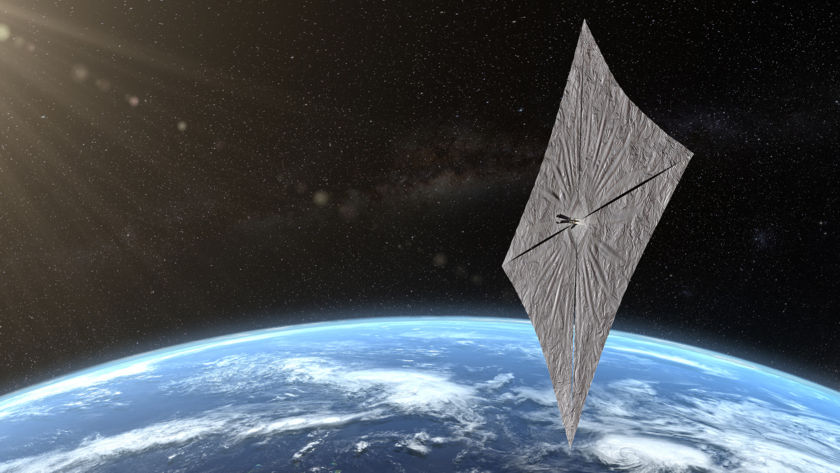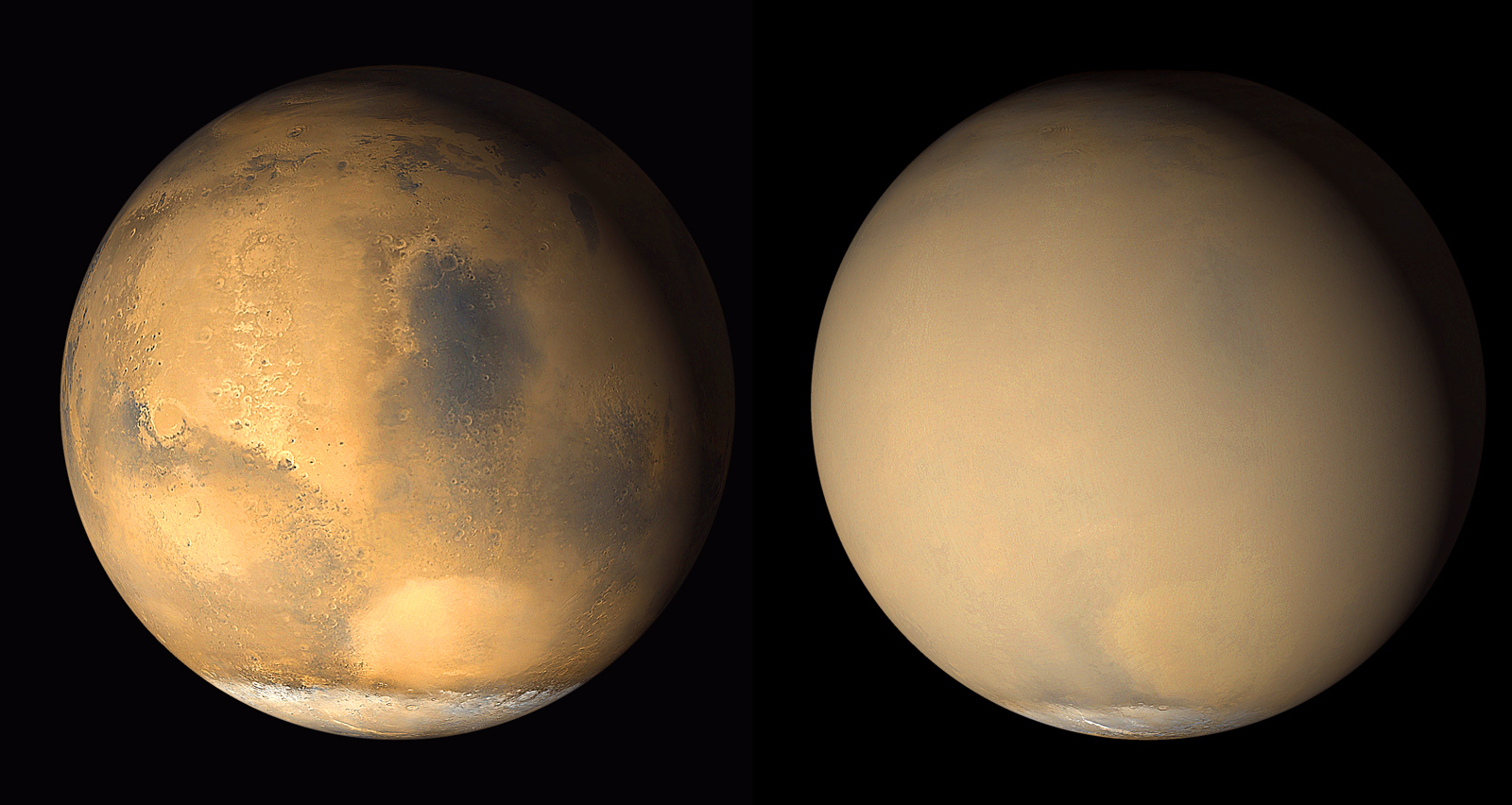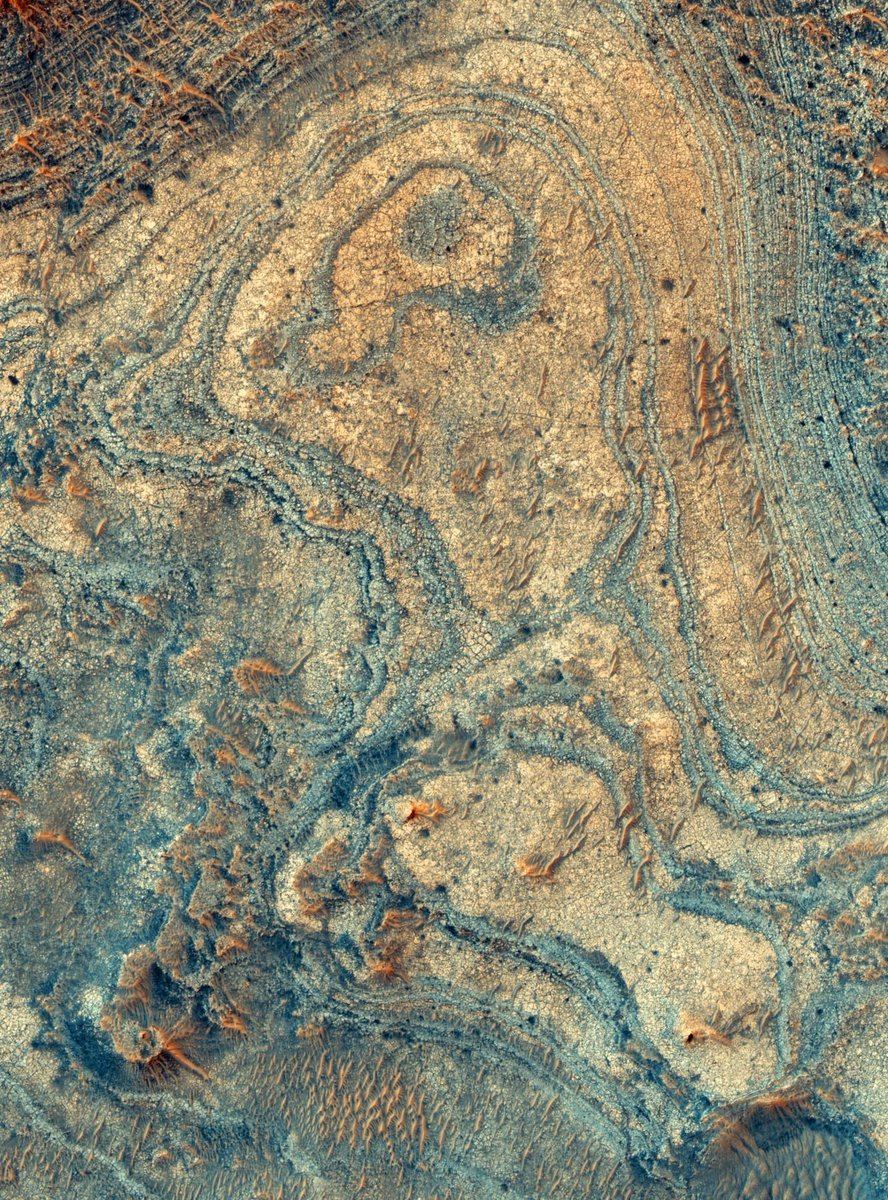A strange feature on the surface of Mars has kept scientists guessing about its origin. It’s a surface deposit of a mineral which is more common in the interiors of planets. A new study shows that this interior mineral was probably brought to the surface by an ancient explosive volcano.
Continue reading “This Strange Feature on Mars was Probably the Result of an Ancient Volcanic Explosion”The Collision that Created the Moon Might Have Also Brought Water to the Early Earth

Scientists at the University of Munster have discovered that Earth got its water from a collision with Theia. Theia was the ancient body that collided with Earth and formed the Moon. Their discovery shows that Earth’s water is much more ancient than previously thought.
Continue reading “The Collision that Created the Moon Might Have Also Brought Water to the Early Earth”
Planetary Society’s Light Sail 2 is Set to Launch on a Falcon Heavy Rocket Next Month

The Planetary Society is going to launch their LightSail 2 CubeSat next month. LightSail 2 is a test mission designed to study the feasibility of using sunlight for propulsion. The small satellite will use the pressure of sunlight on its solar sails to propel its way to a higher orbit.
Continue reading “Planetary Society’s Light Sail 2 is Set to Launch on a Falcon Heavy Rocket Next Month”Is Dark Matter Made of Axions? Black Holes May Reveal the Answer
What is dark matter made of? It’s one of the most perplexing questions of modern astronomy. We know that dark matter is out there, since we can see its obvious gravitational influence on everything from galaxies to the evolution of the entire universe, but we don’t know what it is. Our best guess is that it’s some sort of weird new particle that doesn’t like to talk to normal matter very often (otherwise we would have seen it by now). One possibility is that it’s an exotic hypothetical kind of particle known as an axion, and a team of astronomers are using none other than black holes to try to get a glimpse into this strange new cosmic critter.
Continue reading “Is Dark Matter Made of Axions? Black Holes May Reveal the Answer”Antimatter Behaves Exactly the Same as Regular Matter in Double Slit Experiments
In 1924, French physicist Louis de Broglie proposed that photons – the subatomic particle that constitutes light – behave as both a particle and a wave. Known as “particle-wave duality”, this property has been tested and shown to apply with other subatomic particles (electrons and neutrons) as well as larger, more complex molecules.
Recently, an experiment conducted by researchers with the QUantum Interferometry and Gravitation with Positrons and LAsers (QUPLAS) collaboration demonstrated that this same property applies to antimatter. This was done using the same kind of interference test (aka. double-slit experiment) that helped scientists to propose particle-wave duality in the first place.
Continue reading “Antimatter Behaves Exactly the Same as Regular Matter in Double Slit Experiments”The Global Dust Storm that Ended Opportunity Helped Teach us how Mars Lost its Water

The enduring, and maybe endearing, mystery around Mars is what happened to its water? We can say with near-certainty now, thanks to the squad of Mars rovers and orbiters, that Mars was once much wetter. In fact that planet may have had an ocean that covered a third of the surface. But what happened to it all?
As it turns out, the global dust storms that envelop Mars, and in particular the most recent one that felled the Opportunity rover, may offer an explanation.
Continue reading “The Global Dust Storm that Ended Opportunity Helped Teach us how Mars Lost its Water”The World’s Space Agencies are Responding to a Hypothetical Asteroid Impact. You Can Watch it all Unfold Online.

Remember when Orson Welles’ 1938 radio show called “The War of the Worlds” fooled people into thinking that Earth was actually being invaded? That was fun.
Now, the ESA (European Space Agency) is tempting fate by live-tweeting the hypothetical approach of the hypothetical asteroid 2019PDC and hypothetically planning a hypothetical response to this hypothetically destructive asteroid. In their hypothetical scenario, 2019 PDC has a 1 in 10 chance of striking Earth in 2029. And you can follow the action on Twitter.
Continue reading “The World’s Space Agencies are Responding to a Hypothetical Asteroid Impact. You Can Watch it all Unfold Online.”Rapidly Spinning Black Hole is Spitting Out Blobs of Plasma
Black holes, those beguiling singularities that sit on the precipice of the known and the unknown, keep surprising us with their behaviour. As organizations like the Event Horizon Telescope have made clear, there’s a lot we don’t know about the holes, and worse than that, we don’t even know how much we don’t know.
Now scientists have observed a new phenomenon that adds to the black hole mystique: a rapidly spinning black hole that ejects massive blobs of plasma.
Continue reading “Rapidly Spinning Black Hole is Spitting Out Blobs of Plasma”Methane-Filled Lakes on Titan are “Surprisingly Deep”

The Cassini mission to Saturn and its moons wrapped up in 2017, when the spacecraft was sent plunging into the gas giant to meet its end. But there’s still a lot of data from the mission to keep scientists busy. A team of scientists working with Cassini data have made a surprising discovery: Titan’s methane-filled lakes are much deeper, and weirder, than expected.
Continue reading “Methane-Filled Lakes on Titan are “Surprisingly Deep””It’s Finally here. The First Ever Image of a Black Hole

“We have taken the first picture of a black hole.”
EHT project director Sheperd S. Doeleman of the Center for Astrophysics | Harvard & Smithsonian.
What was once un-seeable can now be seen. Black holes, those difficult-to-understand singularities that may reside at the center of every galaxy, are becoming seeable. The Event Horizon Telescope (EHT) has revealed the first-ever image of a black hole, and with this image, and all the science behind it, they may help crack open one of the biggest mysteries in the Universe.
Continue reading “It’s Finally here. The First Ever Image of a Black Hole”



